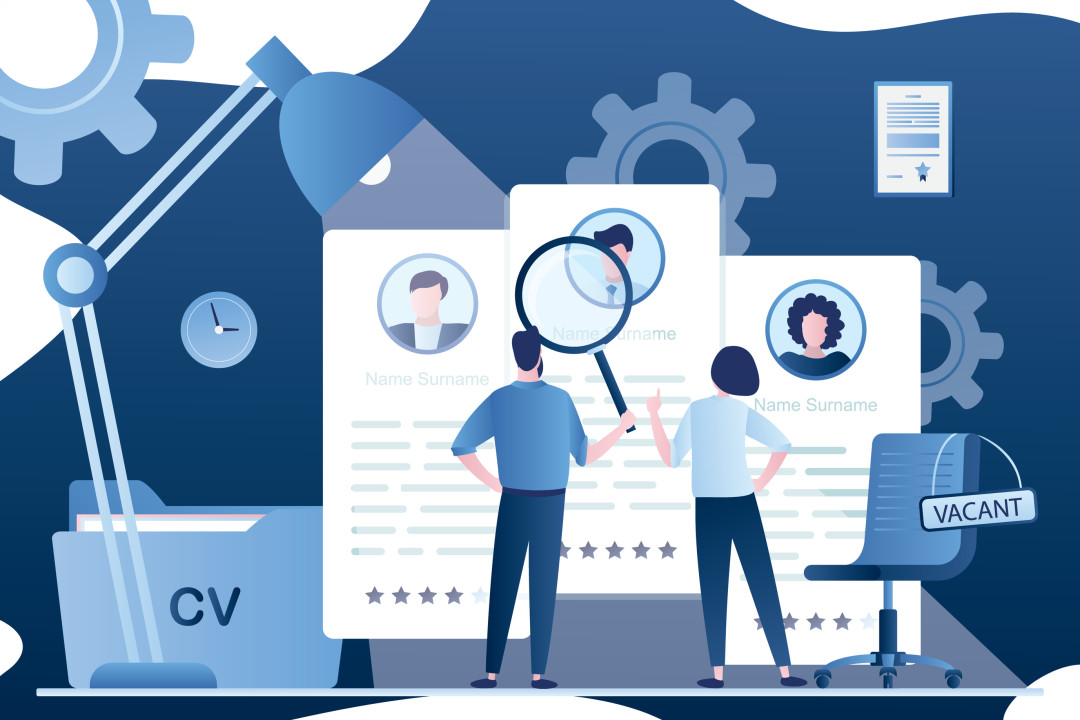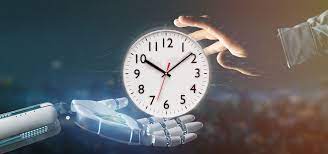Hello!
Investing in outstanding content is a crucial aspect of a marketing strategy capable of delivering next-level results.
If you look at the research surrounding content marketing success rates, you’ll find that 80% of marketers who are ‘extremely successful’ in content marketing have a documented content strategy.
Moreover, there are clear trends regarding what formats work well for attracting, engaging, and converting audiences, showing just how important it is to choose the best types of content to publish on your site.
So, whether you’re looking for tips or inspiration to enhance your content marketing strategy, these are the seven types of content your website needs in 2024.
Video
 Over the last couple of years, video (both long-form and short-form) has become almost ubiquitous.
Over the last couple of years, video (both long-form and short-form) has become almost ubiquitous.
Not only did 91% of marketers invest in video marketing in 2022, but 96% considered it an important part of their strategy. Moreover, survey data shows that it’s not just marketers who are enamored with the format. Consumers want more of it as well. In fact, 91% of people wanted to see more online videos from brands in 2023.
So even if you feel like videos might be too big of an investment (money or time-wise) to seriously consider adding it to your repertoire, explore opportunities for utilizing this type of content on your website.
The most effective way to employ video is to create user-friendly explainers you can add to your homepage, landing pages, or product pages. This type of content can be highly effective at boosting product understanding and inspiring consumers to convert.
It’s a good idea to take inspiration from SaaS brands like Klue. On its homepage, this brand utilizes a 75-second video to explain how its solution works in a way that’s easy to understand and relevant to Klue’s audience’s needs.
If you want to take your content marketing strategy to the next level in 2024, you could also utilize video to complement the written content on your website.
 For example, if you check out the Goldcast blog, you’ll see that many posts include short-form video clips to supplement the tips outlined in the article.
For example, if you check out the Goldcast blog, you’ll see that many posts include short-form video clips to supplement the tips outlined in the article.
In the How Demand Gen Marketers Can Build Loved and Trusted Brands article, Goldcast’s content team includes several excerpts from a live event where experts give valuable and insightful tips on accomplishing a desired goal.
Easy-to-use self-service tools
The B2B buying journey is lengthy, highly complex, and involves many decision-makers. Moreover, converting these users can be challenging, especially as the process can take anywhere from a couple of months to over a year. But the fact is, you can use high-quality content to convert prospects at higher rates.
According to Deloitte’s research on B2B customer experience, self-service solutions are an excellent investment for businesses trying to boost sales. In fact, the organization’s research found that 79% of buyers want self-service options. And 75% expect brands to provide easy-to-use customer apps and websites when choosing digital solutions.
With this in mind, if you’re looking for the most effective types of content to add to your website, consider investing in user-oriented interactive or visual tools to provide your audience with easy access to high-value information.
 For instance, if you check out the Shop Solar website, you’ll notice that the brand has a simple yet effective calculator for watts, volts, and amps that makes it easier for prospects to convert between the different measures.
For instance, if you check out the Shop Solar website, you’ll notice that the brand has a simple yet effective calculator for watts, volts, and amps that makes it easier for prospects to convert between the different measures.
And even though electrical calculations are just a tiny part of the process of going solar, the tool can be an invaluable resource for B2B (and B2C) prospects trying to make sense of their energy needs when making the switch.
Alternatively, you can also produce various infographics and visual data representations. These are a great format to add to your website as they make complex data easier to comprehend. More importantly, these resources are highly shareable. You can use them as information packets that decision-makers can employ to speed up the solution evaluation stage of the buyer’s journey.
For example, a quick glance at the What Planets Are Visible Tonight article on the Love the Night Sky website shows how this brand chose to transform highly complex astronomy information into charts and images.
The value of this type of content isn’t just that it’s easy to comprehend. But more importantly, it’s user-friendly (especially from a non-expert view). And that holds tremendous value in simplifying and shortening the sales cycle.
Long-form content that builds credibility and shows expertise
 When exploring and evaluating software solutions to invest in, today’s B2B buyers heavily lean on trusted sources of information.
When exploring and evaluating software solutions to invest in, today’s B2B buyers heavily lean on trusted sources of information.
In fact, according to the G2 Software Buyer Behavior Report, 85% of buyers rely on industry experts, colleagues, and professional networks for purchasing advice, showing just how essential trust is in the B2B buyer’s journey.
So, knowing that you need to produce and distribute content that will effectively earn your target audience’s trust, you must invest in formats that can help you achieve this effect.
One of the best types of content for building credibility and highlighting expertise is, without a doubt, long-form written content.
The value of in-depth resources isn’t just the breadth of information they contain. They are also an excellent tool for showcasing your team’s expertise. Plus, they hold a lot of potential for boosting brand and product awareness.
(After all, they earn more backlinks than shorter posts.) Plus, long-form articles allow almost unlimited space to include any relevant data, research, and infographics. All of these formats boost Google rankings.
Now, the fact is that creating ultimate guides and how-to articles isn’t a job that can be finished in a single afternoon. Often, these resources require you to collect tons of data and provide real-life examples. Furthermore, to be effective, they need to be formatted in a way that enhances readability.
 Aura’s post on retail arbitrage on Amazon is an excellent example of how a brand can use in-depth content to boost website performance.
Aura’s post on retail arbitrage on Amazon is an excellent example of how a brand can use in-depth content to boost website performance.
In addition to presenting readers with all the information they need to know about arbitrage, this resource also gives step-by-step, example-backed instructions for achieving the desired effect.
What’s more, the article doesn’t just cover a ton of valuable information but also shows the author’s expertise. (This communicates that Aura is a trustworthy brand Amazon sellers can trust to deliver high-quality information.) Plus, it exercises transparency, putting user value before profits. Aura’s solution isn’t mentioned until the end of the article.
If you decide to take the time to produce this type of content for your website in 2024, you can also consider putting it behind a gate.
Gated content is a tried-and-tested lead-generation tool. So, if you feel like your content contains sufficient value to grab your target audience’s attention, consider limiting access to it. You can grant access to those who are willing to provide an email address in exchange. For example, that’s what Ada did in its 2022 Forrester Total Economic Impact report.
 One thing to note when opting for this type of content for your website is that making it effective requires you to make the value of the gated resource clear so that people feel comfortable with whatever toll the “gate” requires – and then backing it up with genuinely good content. Providing web visitors with data highlights typically helps in this regard.
One thing to note when opting for this type of content for your website is that making it effective requires you to make the value of the gated resource clear so that people feel comfortable with whatever toll the “gate” requires – and then backing it up with genuinely good content. Providing web visitors with data highlights typically helps in this regard.
Product comparisons
One of the biggest mistakes content marketers make when choosing formats to invest in is only focusing on the early stages of the buyer’s journey. And while publishing awareness-stage content is the sensible way to attract potential customers, the practice doesn’t account for the fact that not all buyers start their shopping journey from zero.
More often than not, consumers (especially B2B buyers) enter the sales funnel already knowing there’s a product that can remove their pain points. So, their buying journey may not begin on Google. They could also go straight to Amazon, your brand’s site, or even conduct the product evaluation process on review sites. That’s what 84% of software buyers do, according to research from G2.
With this in mind, it’s a good idea to consider adding product comparison-type content to your website in 2024, regardless of whether you sell physical or digital products or services. There are several directions you can take with this format.
 For example, if you want to prioritize information accessibility, something similar to what Medical Alert Buyers Guide did in their Best Medical Alert Systems of 2023 chart can be a solid choice.
For example, if you want to prioritize information accessibility, something similar to what Medical Alert Buyers Guide did in their Best Medical Alert Systems of 2023 chart can be a solid choice.
This resource presents readers with several product options, ranking them based on user ratings and describing the main features and benefits of each solution.
However, if you want to make this type of content even more valuable to professional users, approach the composition process from the point of view of your future users.
If you check out the ClickUp website, you’ll see that the brand has dedicated product comparison landing pages for every one of its main competitors. And what stands out about these pieces of content is the direct and easy-to-understand way they highlight the differences between possible solutions.
For example, on the Todoist vs. ClickUp product comparison page, you’ll see a chart showing all the features that ClickUp offers. This is a super helpful way for the brand to point out all the reasons its prospects may enjoy using its solution over the alternative.
User-generated content
We’ve already mentioned that buyers don’t perceive branded content as the best source of advice when deciding what products to invest in. And this is equally true for B2B and B2C buyers. However, research shows that one format stands out in terms of its trust-boosting capacities: user-generated content.
With this in mind, when determining the types of content your website needs in 2024, UGC should rank high on your list of content-production priorities. Fortunately, there are various ways to utilize UGC on a B2B or SaaS website and employ it for its benefits.
 For example, case studies that show impressive results and testimonials submitted by industry experts can be valuable assets for driving conversions, especially when they’re backed by real-world data. If you check out the SingleStore Customers page, you’ll see several case studies describing the outcomes the brand’s solution enabled for big companies.
For example, case studies that show impressive results and testimonials submitted by industry experts can be valuable assets for driving conversions, especially when they’re backed by real-world data. If you check out the SingleStore Customers page, you’ll see several case studies describing the outcomes the brand’s solution enabled for big companies.
For instance, in the General Electric case study, the brand boasts of solving 100+ use cases with a single platform, reducing the number of auditors 40x, and enabling 4+ million transactions per minute. Moreover, the positive impacts of SingleStore’s solution are supported by quotes submitted by GE’s Chief Data Officer.
However, if you decide to employ user-generated content as part of your marketing strategy, understand that you don’t necessarily have to reserve this format for dedicated Customers or Testimonials pages.
If you look at the Lanteria blog, you’ll see that each post includes a UGC section at the end. For example, their 6 Tips To Conduct A Successful Probation Review Meeting post ends with a section showcasing the brand’s high rankings on software review sites like Product Hunt, Capterra, and G2.
Below that, the page contains a selection of positive testimonials from satisfied users who have solved their needs thanks to the solution.
Post-purchase support content
According to research from Nexthink, 49.96% of all software licenses aren’t used by employees, resulting in a whopping $45 million in loss per month or just over $1 billion annually.
Considering this information, it comes as no surprise that post-purchase support is one of the main things business buyers consider before deciding what software solutions to invest in. That includes onboarding materials, training, and regular customer support.
 So, if you’re aiming to use website content to win more business, it might not be a bad idea to find ways to do so in a way that highlights your dedication to delivering a stellar customer experience.
So, if you’re aiming to use website content to win more business, it might not be a bad idea to find ways to do so in a way that highlights your dedication to delivering a stellar customer experience.
One of the best types of content you can invest in to emphasize your dedication to customer satisfaction is instructional content meant for existing users. For instance, if you check out the Lucky Orange Help page, you’ll notice that the brand presents web visitors with several types of support materials. These include installation guides, advice for new teams, tool-specific instructions, APIs, and technical documentation for developers.
Moreover, many of these resources provide a highly customer-oriented user experience, like the Introduction to Dynamic Heatmaps article. It includes textual instructions and a video tour for better comprehension and faster learning.
Another excellent example of content that can boost customer satisfaction and inspire loyalty comes from Streak. With its product update in the Introducing Streak AI article, this brand shows how it’s fully dedicated to bringing new features to existing users.
Again, the addition of video within the article makes for a great touch. That’s not only because the format is far easier to consume than just text. The multimedia format also allows Streak’s team to demonstrate the new features through a short multimedia demo.
Content audits
 Last but not least, don’t forget that churning out new posts won’t deliver the necessary benefits if you fail to update existing articles on your website.
Last but not least, don’t forget that churning out new posts won’t deliver the necessary benefits if you fail to update existing articles on your website.
In fact, Semrush’s State of Content Marketing report discovered that the results of a content audit included an increase in engagement for 53% of marketers and an improvement in ratings for 49% of the survey participants.
So, if you’re looking for tips on how to maximize the ROI of your content marketing efforts, do your best to keep your existing articles up-to-date.
As a rule of thumb, reviewing and updating posts every six months is more than enough to ensure their relevance and timeliness. But, of course, if there are any major changes in your industry that you need to address, you can do so before the six-month period is over.
It’s also a good idea to inform readers when each article was last updated so that they know that the information presented in your blog posts is fresh. For instance, if you look at Hubspot’s How to Train Your ChatGPT guide, you’ll notice that the topmost section of the page includes two dates.
The first one states when the resource was published, while the second references the last update made to the article. Both pieces of information are useful for readers searching for the latest data.
Final thoughts
 Identifying and employing the right types of content for your website is crucial if you want to achieve a high ROI with your content marketing strategy.
Identifying and employing the right types of content for your website is crucial if you want to achieve a high ROI with your content marketing strategy.
However, no matter the advice regarding the most effective or ‘must-have’ formats, remember that choosing the best kinds of content for your brand highly depends on your audience’s needs.
So, don’t forget to go back to your brand’s roots and re-evaluate your target audience’s preferences. Ultimately, you should have the best idea about the resources your prospects need. So make sure you’re ready to create those and make them easily accessible so that they can deliver the positive results you’re after.
Thank you!
Join us on social media!
See you!






